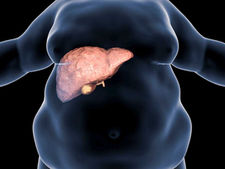
Circumcision
Circumcision is the process of surgically removing the foreskin covering the tip of the penis, in a certain shape and length, and exposing the tip of the penis. The appropriate age range for circumcision is 0-2 years old and after 7 years old. Since the sexual development period of children between 2-7 years old, circumcision is not recommended in this age range.
What are the Health Benefits of Circumcision?
Cleaning and hygiene of the penis after circumcision is easier than normal. Although the rate of urinary tract infections is lower in men, it is more common in uncircumcised men than in circumcised men. In the uncircumcised penis, a narrowing problem called phimosis at the tip of the penis may occur. Due to this narrowness, the foreskin cannot be retracted sufficiently and inflammation is more common in the head of the penis. Penile cancer is a rare clinical case that is less common in circumcised men.
Penile cancer is more common in uncircumcised men. In addition, the sexual partners of circumcised men have a lower rate of cervical cancer. Better hygiene level. Circumcision makes washing the penis easier. However, men with an uncircumcised penis are advised to wash under the foreskin regularly.
Reduced risk of urinary tract infection. The risk of urinary tract infections in men is low, but these infections occur more frequently in uncircumcised men. Severe infections early in life can lead to kidney problems later in life. Reduced risk of sexually transmitted infections. Circumcised men have a lower risk of contracting some sexually transmitted infections, including HIV. Still, safe sexual practices are essential. How is Circumcision Done? The most frequently applied, reliable method with the least side effects is the surgical method. It usually takes between 3 and 7 days for the penis to fully heal after circumcision. After circumcision, the tip of the penis may be sore or the penis may appear red, swollen and swollen. You may also notice a small amount of yellow fluid at the tip of the penis. All these problems disappear within an average of 1 week. Surgical Method The surgical method is performed classically by surgically cutting the foreskin and sewing the ends together. Since aesthetic and absorbable stitches are used here, no additional dressing or stitches are required. In surgical circumcision procedures, since the foreskin is removed as much as necessary, the growth and development of the penis continues in its normal course in older ages. Circumcision While Sleeping The procedure is performed under local and sedoanalgesia. When performed under local anesthesia, only the penis area is anesthetized. The child is awake.
When the procedure is performed under sedoanalgesia, the child is asleep and takes the risks of anesthesia. If circumcision is performed during sleep; Again, only the penis area is anesthetized. Circumcision is performed after the child falls into his natural sleep. In this way, the risks of anesthesia are avoided and the child does not experience any trauma.
Kiss. Dr. Serhat Ozgun
prostate surgery, laser lithotripsy, holep, prostate cancer, prostate, prostate surgery, laser lithotripsy, holep, prostate cancer, does SSI cover prostate surgery, prostate health, urology, prostate diseases, prostate treatment, prostate surgery, laser prostate surgery, prostate problems, benign prostate enlargement, prostate symptoms, prostate biopsy, prostate examination, prostate ultrasound, prostate hormone therapy, prostate biopsy result, prostate cancer stages, prostate cancer treatment, prostate cancer symptoms, prostate cancer risk factors, prostate cancer diagnosis
FOR INFORMATION AND APPOINTMENT, YOU CAN LEAVE YOUR NUMBER OR ASK OUR EXPERTS
YOU CAN LEAVE YOUR NUMBER FOR INFORMATION AND APPOINTMENT AND ASK QUESTIONS TO OUR EXPERTS



-04.png)
-06.png)
-05.png)
-08.png)
-07.png)























